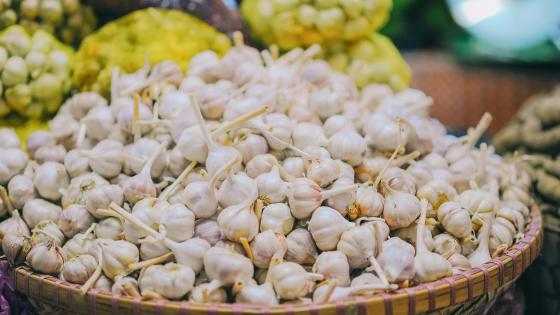
Garlic
Garlic and Elephant Garlic
Garlic and elephant garlic, while both members of the allium family are botanically different. With elephant garlic actually being a leek that produces large cloves and garlic being more of a true bulb. For production purposes though, they are generally considered the same. In Kentucky, garlic is most often grown as a part of a diversified vegetable farm due to its ability to fit well into a crop rotation schedule and the fact that its production window varies greatly from many other annual vegetable crops. Hardneck garlic is preferred for KY plantings over softneck varieties. There is only one cultivar of elephant garlic despite often being listed under different names.
Key Requirements
| Land | Low |
| Labor | High |
| Capital | Medium to High |
Take the HortBizQuiz to see how much Land, Labor, and Capital you have for your operation.
Markets
- Direct to Consumer
- Local Grocery
- Auctions
Pest & Disease
Following good cultural and sanitation practices can go a long way towards reducing disease and pest issues on garlic. Weed control is especially important as garlic is a poor competitor.
Costs and returns are presented as estimates. They will vary based on your farm and markets.
Costs and returns are presented as estimates. They will vary based on your farm and markets.
Challenges
- Rain during harvest can cause serious problems of decay and staining
- Garlic and elephant garlic is hand-harvested.
- Need a curing area to ensure long shelf-life and best quality
Opportunities
- Off-season production cycle
- High market demand
- Potentially profitable on small scale